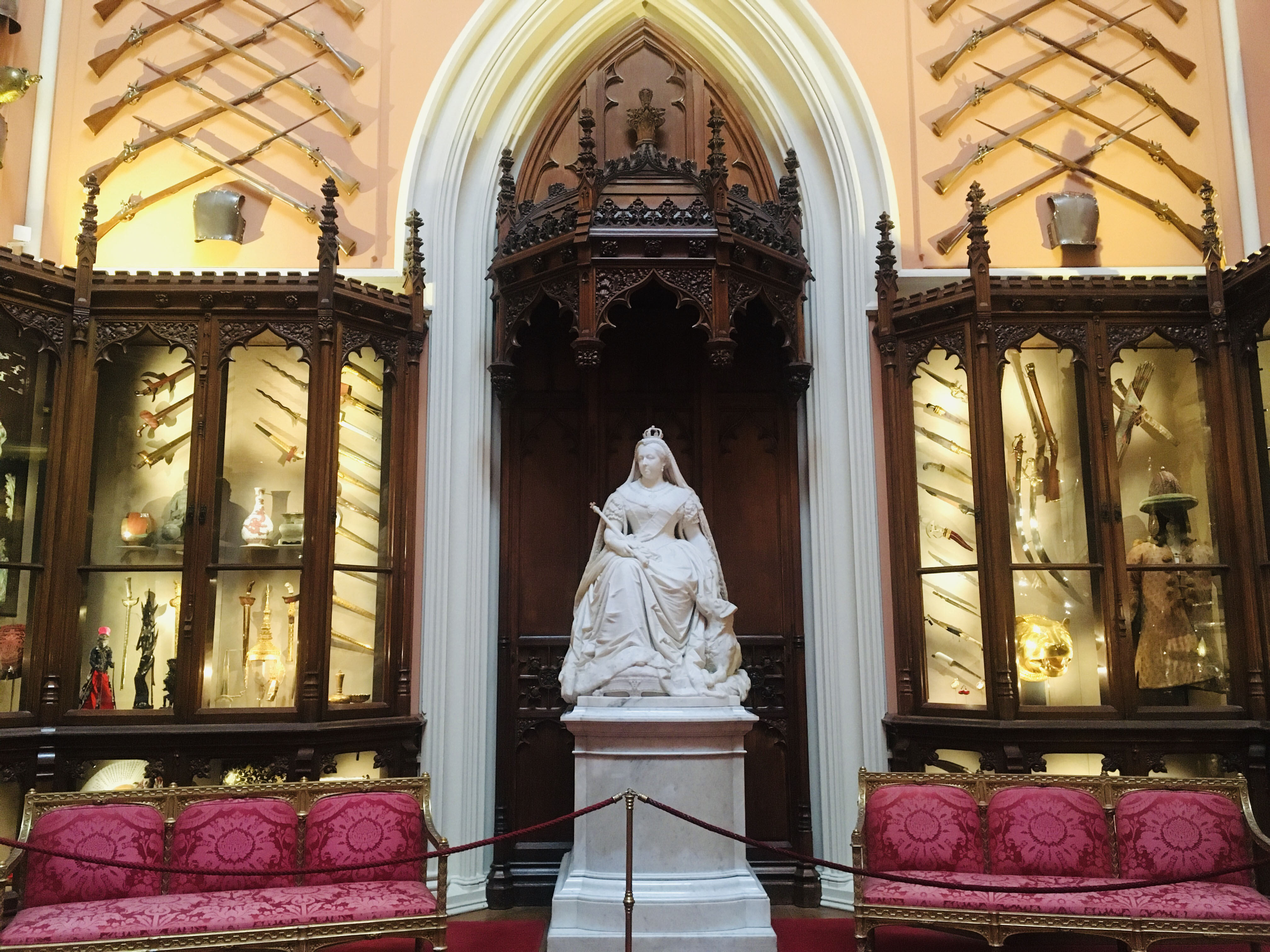
Grand Vestibule: The British Monarchy and the World
The Grand Vestibule at Windsor Castle reflects interaction between the monarchy and the wider world
INDIAN
War coat of Tipu Sultan
1785-90RCIN 67213
Faded pink silk brocaded war coat of Tipu Sultan (1750-99) with stylised white and blue flowering plants; the front with a double row of five orange silk pom-pom tassels; the sleeves with long curved cuffs. Lined with crimson and green silk.
This armour belonged to Tipu Sultan (1750-99), the so-called Tiger of Mysore. Tipu Sultan succeeded as ruler of the South Indian state of Mysore in 1782, where he built a sophisticated and modern court around his palace at Seringapatam. He was described by a contemporary European observer of the war in Mysore: 'His stature was about five feet eight inches; he had a short neck, square shoulders, and was rather corpulent: his limbs were small, particularly his feet and hands; he had large full eyes, small arched eyebrows, and an aquiline nose; his complexion was fair, and the general expression of his countenance, not void of dignity'. Tipu spent much of his reign engaged in hostilities against the British. In 1792 a peace treaty was signed but the discovery of secret communciations with Napoleon brought about a renewed British campaign against him, culminating in the sack of Seringapatam on 4 May 1799. The armour was seized as a trophy of the war. It was presented to the Prince Regent by General Sir John Cradock, in 1811.
This armour belonged to Tipu Sultan (1750-99), the so-called Tiger of Mysore. Tipu Sultan succeeded as ruler of the South Indian state of Mysore in 1782, where he built a sophisticated and modern court around his palace at Seringapatam. He was described by a contemporary European observer of the war in Mysore: 'His stature was about five feet eight inches; he had a short neck, square shoulders, and was rather corpulent: his limbs were small, particularly his feet and hands; he had large full eyes, small arched eyebrows, and an aquiline nose; his complexion was fair, and the general expression of his countenance, not void of dignity'. Tipu spent much of his reign engaged in hostilities against the British. In 1792 a peace treaty was signed but the discovery of secret communciations with Napoleon brought about a renewed British campaign against him, culminating in the sack of Seringapatam on 4 May 1799. The armour was seized as a trophy of the war. It was presented to the Prince Regent by General Sir John Cradock, in 1811.







